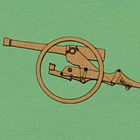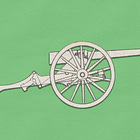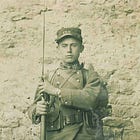This is the fifth post in the multi-part series. To read the first four parts of this article, please follow the following links:
Writing in the early 1920s, Émile Rimailho, who played a key role in the development of the recoil mechanism of the 75mm field gun of 1897, told his readers that the program to arm all field artillery regiments with the new weapon cost three hundred million francs. In addition for paying for the new guns, this sum, which equalled sixty million US dollars of the day, covered the cost of specialized vehicles (such as limbers and ammunition chests), new accessories (such as the automatic fuze setter), and a substantial stock of new projectiles.1
If the French Army had adopted the Mourcet carriage instead of the 75mm field gun, it would have saved a substantial proportion of this amount. That is, the treasury of the Third Republic would have been spared the expense of building new barrels, new vehicles, and new accessories. Moreover, while the state arsenals would continue to make improvements to the shells fired by 90mm and 95mm guns, there would be no need to replace the entirety of the existing stock of projectiles.
The series production of the 75mm field gun was, for reasons of secrecy, financed “off budget.” (Today, we might describe it as a “black program.”) Thus, it is quite possible that, had the new weapon performed poorly in its trials, the money saved might have been spent on ships, roads, or public buildings. If, however, the savings were used for military purposes, the Minister of War could have put it to good use.
France had been the first major power to adopt a rifle (the Lebel rifle of 1886) that fired a bullet propelled by smokeless powder. Because of this, it suffered from the disadvantages that often afflict an early adopter of new technology. For one thing, the Lebel used an old-fashioned tube magazine, which took more time to load than the box magazines of all smokeless-powder military rifles in use. For another, the rifles, most which had been built before 1893, were beginning to wear out.
Thus, it is not hard to imagine that the French authorities would have used some of the money made available by the absence of the 75mm field gun to replace the Lebel. Indeed, given the peculiarities of prototypes for such weapons developed by French arsenals in the decade on either side of 1900, it is quite possible that this new rifle would enjoy the advantages of both a rimless cartridge and a semi-automatic action. Thus, rather than going to war with the worst military rifle of its age, the poilu of 1914 would carry a weapon that was a full generation ahead of its counterparts in use in other European armies.
In addition to this, the adoption of a rimless cartridge and a semi-automatic rifle would pave the way for the development of automatic rifles and light machine guns. Thus, once the French authorities had been convinced of the value of such weapons, they would, in all likelihood, have adopted weapon that bore a closer resemblance to the splendid Châtellerault of 1924 than the fragile Chauchat of 1915.
Another thing that the French Army of the early twentieth century could have done with additional money was improve the pay of company-grade officers, non-commissioned officers, and men who re-enlisted after completing their required terms of service “with the colors.” Doing this would increase the number of lieutenants available to command platoons and, at the same time, reduce the number of captains unable to afford the high cost of attending the staff college.2 It would also provide additional career non-commissioned officers to reserve units formed on mobilization and encourage the re-enlistment of cavalrymen who specialized in the training of horses [dresseurs].3
For Further Reading:
To Share, Subscribe, or Support:
Émile Rimailho Artillerie de Campagne [Field Artillery] (Paris: Gauthier Villars, 1924) page 63
For the problems resulting from the low pay of junior officers, see Douglas Porch The March to the Marne: The French Army 1870-1914 (Cambridge: Cambridge University Press, 1981) pages 88-91
For one of the many articles complaining about the shortage of experienced troopers in cavalry regiments, see D’Aubert “La Cavalerie dans la Guerre de Demain” [Cavalry in the War of Tomorrow] Revue de Cavalerie (July 1912) page 509











